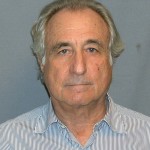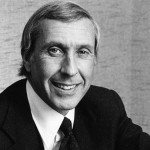“Greed, for lack of a better word, is good. Greed is right. Greed works.” That is, Gordon Gekko, until the law — if not decency — catches up with you. Here, a look back at five of America’s most infamous financial con men who ultimately traded pinstripes for prison stripes:
#1 Bernard Madoff
Having made billions through trickery and deceit, Madoff may very well personify the term “filthy rich.” Over the years, Madoff, who ran his own Wall Street investment firm, managed to convince individuals and companies to hand over huge sums of money — over $20 billion in all — which he claimed he then invested. Investors believed the total funds surpassed $65 billion, but instead of actually investing the money, Madoff paid older investors returns out of their own money or money Madoff had swindled from others.
Madoff got rich at the expense of his clients, many of whom lost their businesses and retirement savings. For operating what is considered one of the largest Ponzi schemes ever, Madoff was turned in by his own sons in 2008 and is now serving a prison sentence of 150 years. He’s also been ordered to pay $170 billion in restitution.
 #2 Bernard Ebbers
#2 Bernard Ebbers
Here’s yet another Bernie gone bad. Ebbers was CEO of WorldCom and grew it into the country’s second-largest telecommunications business through the acquisition of smaller companies. The takeovers left the company deep in debt, but clever doctoring of the books covered it up.
In fact, Ebbers inflated his company’s assets by $11 billion. The truth, however, caught up with WorldCom. When it filed for bankruptcy, its stock went from $64 per share to just a little over $1. In 2005, Ebbers was convicted of nine counts of conspiracy, securities fraud and making false regulatory filings. He’s now serving a 25-year prison term.
#3 Kenneth Lay
Lay, founder of Enron, the now-legendary commodities, energy and service corporation, built the company up from humble beginnings to a giant conglomerate that claimed to turn a $100 billion profit in 2000.
But after the Securities and Exchange Commission began an investigation and Enron filed for bankruptcy in late 2001, it became clear that Enron wasn’t as solvent as it seemed. Enron was cooking the books, declining to document huge debt. The company failed, shareholders lost $74 billion, and thousands of employees saw their retirement funds decimated.
Lay was convicted of securities fraud and other charges but died before he could be sentenced. His conviction was later vacated.
 #4 Barry Minkow
#4 Barry Minkow
Minkow supposedly ran a company called ZZZZ Best, an industrial carpet-cleaning business, but the only thing that ever went to the cleaners were his investors. When Minkow made the “company” public, shares in the stock shot up. However, it turned out there was no company, no contracts and no customers. in 1987 and was sentenced to 25 years in prison.
#5 Ivan Boesky
Acting on nonpublic, insider information about mergers and acquisitions — a clear violation of SEC policies — Ivan Boesky, who inspired the fictional “Wall Street” movie character Gordon Gekko, amassed an ill-gotten fortune of about $200 million. Boesky made $50 million off one sale alone, when Philip Morris bought General Foods Corporation in 1985.
However by the late 1980s, Boesky was being investigated by the SEC. In September 1986, he struck a plea deal and ratted out other players in the insider-trading scandal, including another Wall Street hotshot, Michael Milken.
Boesky served a 3 1/2-year prison sentence and was fined $100 million. Half went to the Treasury Department, and half was given to those he cheated.
Photos: Wikimedia Commons
Related articles:





2 comments
Ruth Parker
You never heard what they are doing for the community. The is to be use for those who are less fortunate. "When I was hungry you didn't feed me, naked you didn't clothes me. When I was thrusted you didn't give me a drink water, when I was homelessness I had know we're to lay my head." How can they live in mansion; and their members cannot pay their bills. There are pastor out there who are bullying congrations, an know one is willing to take a stand, they are afraid to be call a trouble maker.
A. S. Mathew
These big time con artists are driven by a sprit of over confidence and infallibility without having an ounce of concern for the hard earned money of the honest people of the society. None of them are escaped from the wrath of the law and truth; still many new con artists are being emerged all over the world filling the prisons with the hard core street criminals. If they could see that place inside four walls in darkness, they might have done differently. Terribly bad stories to learn by all.